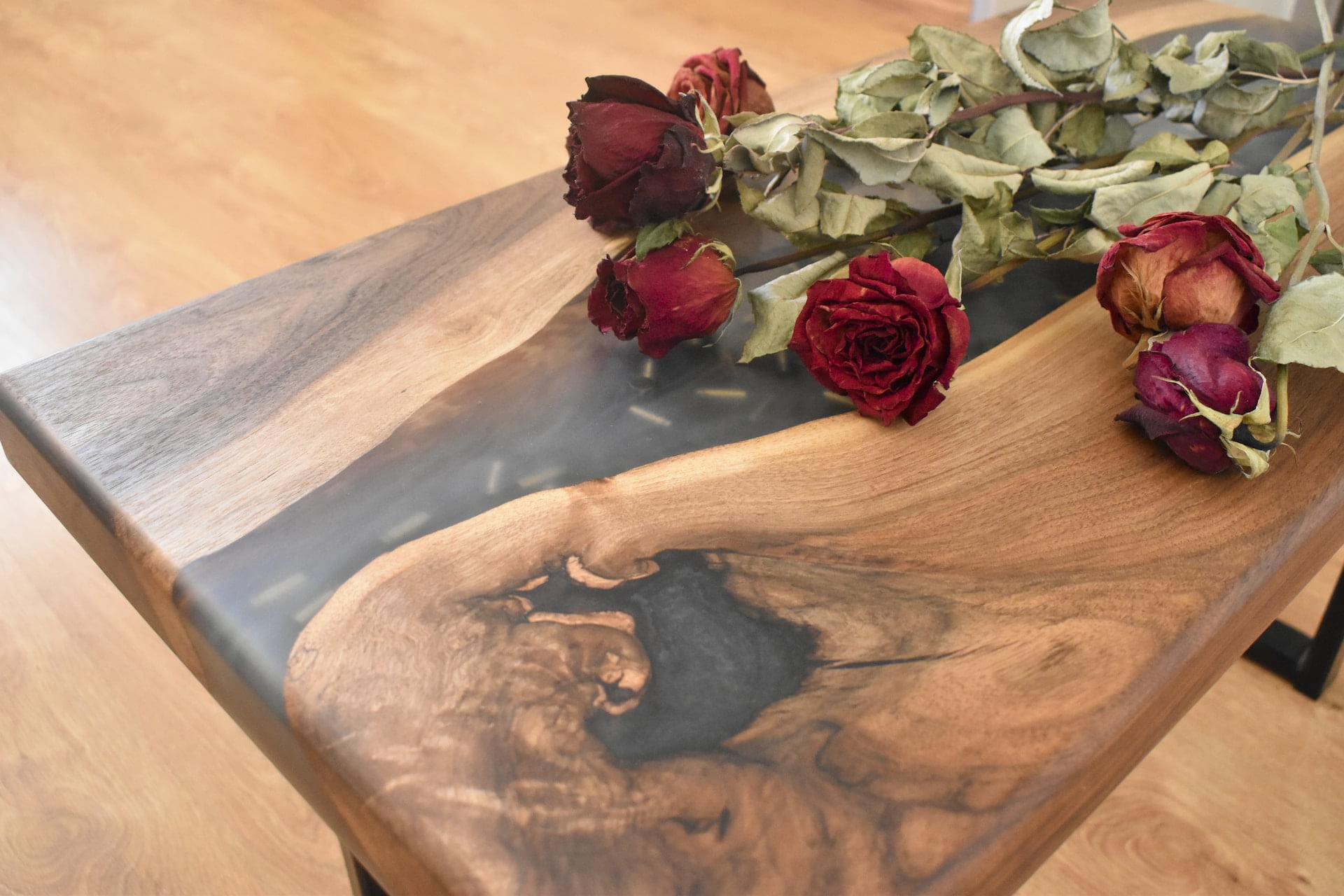River tables have rapidly become a symbol of modern interior design, seamlessly merging the raw beauty of wood with the fluidity of resin. The process of creating a river table is a harmonious dance between craftsmanship and artistry.
We’ll unveil the meticulous steps involved in crafting these captivating pieces, from selecting materials to pouring resin, resulting in a functional masterpiece that captures the essence of nature’s flowing elegance.
Choosing the Right Materials: Where Wood and Resin Converge
The foundation of any remarkable river table lies in the selection of materials. Selecting the Right Wood is crucial, as it shapes both the aesthetics and durability of the final piece.
High-quality hardwoods like walnut, oak, and maple are favored for their rich tones and distinctive grain patterns that lend character to the table.
Crafting the Wood Slabs: From Raw to Refined
Creating the perfect river table begins with the Crafting of Wood Slabs. Artisans meticulously choose slabs that showcase the most captivating features of the wood.
The slabs are then prepared, sanded, and shaped to achieve a smooth surface that brings out the natural beauty of the grain.
Designing the River Path: The Art of Resin Pouring
The heart of a river table is the intricate path of resin that winds through the wood slabs. Designing the River Path requires precision and creativity. Epoxy resin, a versatile material, is carefully poured between the wood, creating the illusion of flowing water.
Various colors can be added to replicate the hues of a river, and the level of transparency can be adjusted to simulate water depth.
Curing and Shaping the Resin: Transforming Liquid into Solid Art
As the resin cures, it undergoes a transformative process, solidifying into a glass-like surface that mirrors the stillness of water.
Curing and Shaping the Resin involves careful observation and manipulation to ensure the resin flows naturally and forms intriguing patterns reminiscent of a river’s journey.
Sanding and Polishing: Revealing the Beauty Within
Once the resin has set, Sanding and Polishing become essential steps to achieve a flawless finish. The resin’s surface is meticulously sanded to create a smooth texture that feels inviting to the touch.
Polishing enhances the resin’s shine, adding a captivating luster that captures and reflects light.
Protecting the Creation: Preserving the Artistry
To ensure the longevity of a river table, Protecting the Creation is imperative. A protective finish is applied to shield the wood and resin from potential damage caused by moisture, heat, or scratches.
This finish not only safeguards the aesthetics but also enhances the resilience of the table.
Conclusion: The Fusion of Craftsmanship and Imagination
In the realm of interior design, river tables stand as a testament to human ingenuity and the ability to transform nature’s inspiration into functional art. The meticulous journey from selecting wood to shaping resin embodies the harmony of craftsmanship and imagination.
A river table is not just a piece of furniture; it’s a tangible representation of the fluidity of creativity, a captivating reminder that nature’s beauty can be sculpted into functional elegance.









